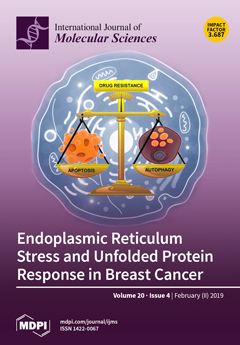Aluminum (Al) at high concentrations inhibits root growth, damage root systems, and causes significant reductions in rice yields.
Indica and
Japonica rice have been cultivated in distinctly different ecological environments with different soil acidity levels; thus, they might have different mechanisms of Al-tolerance.
[...] Read more.
Aluminum (Al) at high concentrations inhibits root growth, damage root systems, and causes significant reductions in rice yields.
Indica and
Japonica rice have been cultivated in distinctly different ecological environments with different soil acidity levels; thus, they might have different mechanisms of Al-tolerance. In the present study, transcriptomic analysis in the root apex for Al-tolerance in the seedling stage was carried out within Al-tolerant and -sensitive varieties belonging to different subpopulations (i.e.,
Indica,
Japonica, and mixed). We found that there were significant differences between the gene expression patterns of
Indica Al-tolerant and
Japonica Al-tolerant varieties, while the gene expression patterns of the Al-tolerant varieties in the mixed subgroup, which was inclined to
Japonica, were similar to the Al-tolerant varieties in
Japonica. Moreover, after further GO (gene ontology) and KEGG (Kyoto Encyclopedia of Genes and Genomes) analyses of the transcriptomic data, we found that eight pathways, i.e., “Terpenoid backbone biosynthesis”, “Ribosome”, “Amino sugar and nucleotide sugar metabolism”, “Plant hormone signal transduction”, “TCA cycle”, “Synthesis and degradation of ketone bodies”, and “Butanoate metabolism” were found uniquely for
Indica Al-tolerant varieties, while only one pathway (i.e., “Sulfur metabolism”) was found uniquely for
Japonica Al-tolerant varieties. For Al-sensitive varieties, one identical pathway was found, both in
Indica and
Japonica. Three pathways were found uniquely in “Starch and sucrose metabolism”, “Metabolic pathway”, and “Amino sugar and nucleotide sugar metabolism”.
Full article






